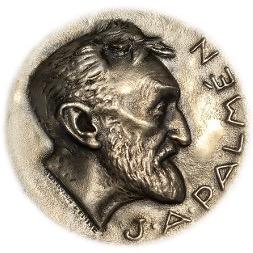Palmén Colloquium - The (changing) geography of innovation in times of the COVID-19 crisis
Friday, 15th DEC
The (changing) geography of innovation in times of the COVID-19 crisis
Innovation is the key to growth. Thus, the geographical distribution of innovative activities, including research and development (R&D), is a major factor explaining differences in regional development. The COVID-19 pandemic and subsequent public health restrictions led to a significant slump in economic activities around the globe. This slump has been met by various policy actions to cushion the detrimental socio-economic consequences of the COVID-19 crisis to eventually bring the economy back on track. The results of the Business Finland funded COSPIN project provide an ex-ante evaluation of the effectiveness of one such policy action in Finland, namely a massive increase in public R&D funding allocated though the novel R&D instrument for firms in disruptive circumstances granted in 2020 via Business Finland. The evaluation started by estimating the structural link between R&D funding and economic growth for Finnish NUTS-3 regions using pre-COVID-19 data. These estimates were used to forecast regional recovery growth out of sample and to quantify the growth contribution of R&D funding. Depending on the chosen scenario, the forecasts point to a mean recovery growth rate of GDP between 2–4% in 2021 after a decline of up to ‑2.5% in 2020. R&D funding constitutes a significant pillar in this recovery process with mean contributions in terms of GDP growth of between 0.4% and 1%. At the same time, by using firm- and municipal-level panel regression analyses, the COSPIN project identified key differences and temporal changes in R&D funding patterns across different region types. The empirical results show that firms located in urban regions have been generally more successful in applying for competitive public R&D funding than firms located in rural regions. However, rural firms have caught up to their urban counterparts during the COVID-19 pandemic. This narrowing of the rural–urban R&D funding gap 1) shows that easy and flexible access to R&D++ funding during the COVID-19 pandemic (in 2020) appears to be especially attractive for small rural enterprises, 2) points to the strategic flexibility of small rural enterprises in times of crisis, and 3) indicates that the innovation capacity of these firms/regions is more resilient to economic shocks than typically thought.
Teemu Makkonen, Professor of regional science and economic geography, University of Eastern Finland, teemu.makkonen(AT)uef.fi
JOIN: TEAMS LINK or Live at Tieteiden talo, Kirkkokatu 6, Helsinki. Room 208 
